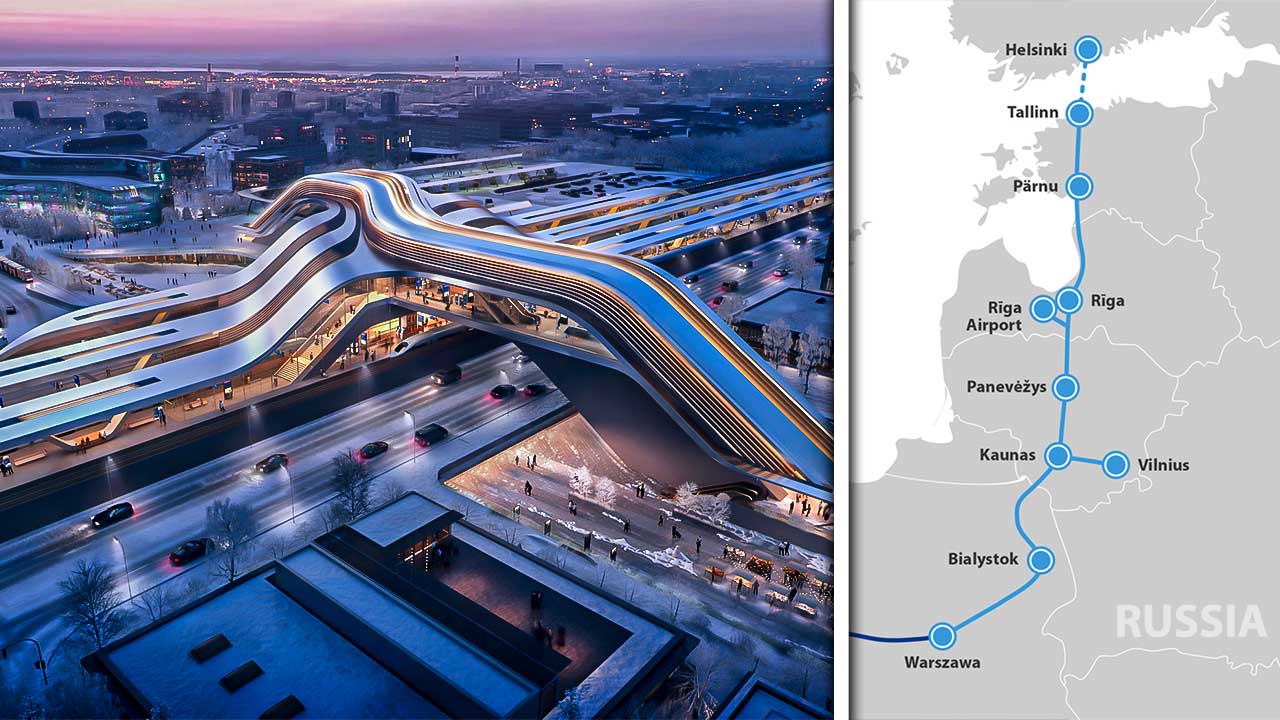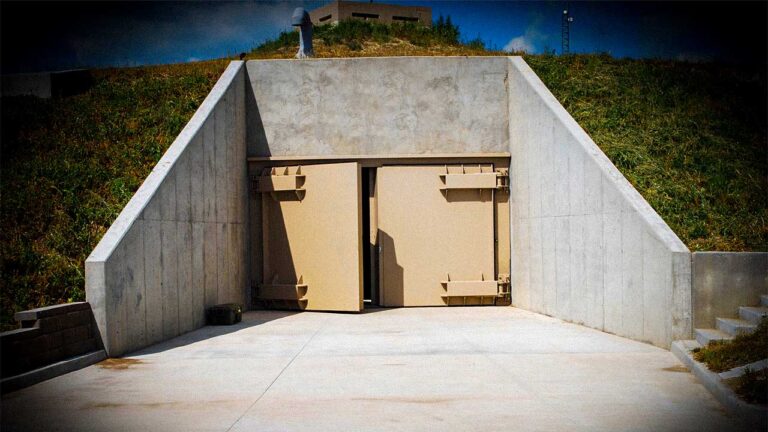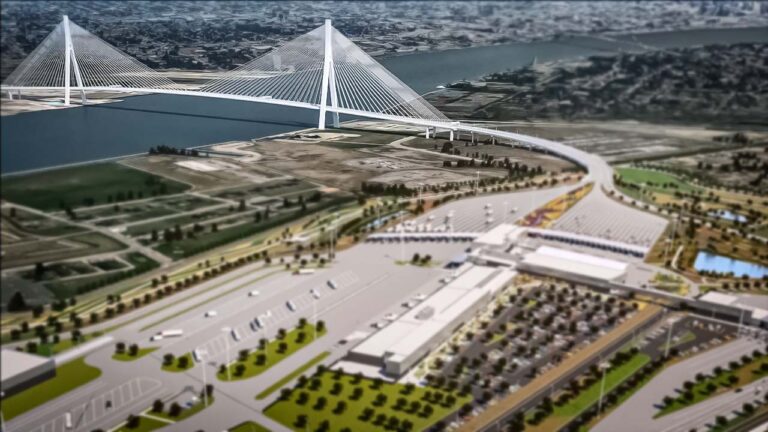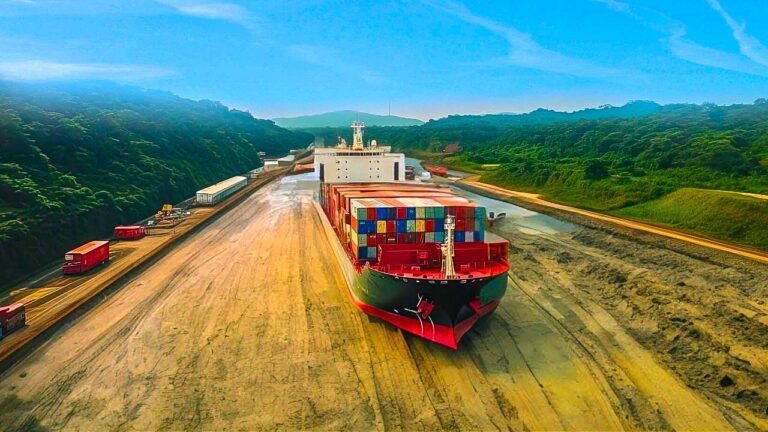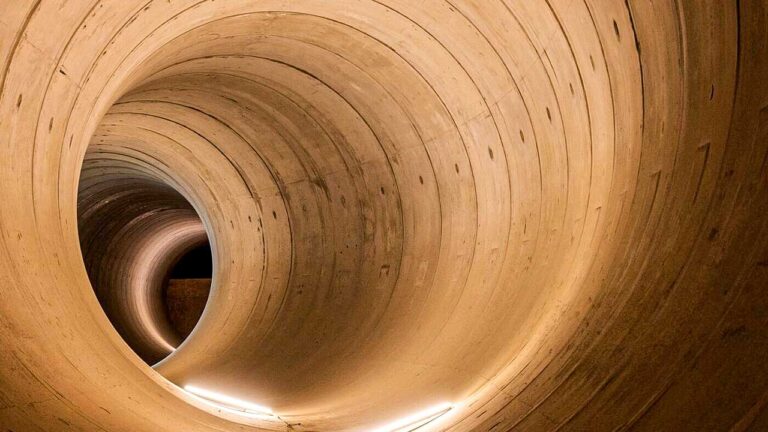Rail Baltica: The European Megaproject Set to Replace Russian Railways
The Baltic States, which include Estonia, Latvia, and Lithuania, are situated along the eastern coast of the Baltic Sea in Northern Europe. These countries have deep historical connections, cultural similarities, and a complex past influenced by various empires and occupations. Today, they are proud members of both the European Union and NATO.
Economically, the Baltic States face challenges which also include foreign economic influence. Enhanced interconnection with Europe is seen as a critical strategy to reduce economic vulnerability and strengthen societal resilience against external pressures. Projects such as Rail Baltica are pivotal in diversifying transportation options, improving connectivity, and bolstering economic resilience across the Baltic region.
The mega project of Rail Baltica is recognized as a top priority by the European Union, that forms a vital part of the North Sea–Baltic Corridor within the Trans-European Transport Networks. With impressive engineering feats, cutting-edge technology, and top-notch design, this extensive initiative is poised to revolutionize regional connectivity, drive sustainable development, and enhance the Baltic states’ integration into the broader European economic landscape.
How do you think this ambitious project will shape transportation and economic dynamics in the Baltics and beyond?
Let’s explore the evolution of transportation in the Baltic States together. In the 19th century, these countries were part of the Russian Empire, witnessing the installation of their first railway lines, marking a pivotal moment in their industrial development. Moving into the 20th century, the Baltic railway tracks underwent multiple gauge changes due to interventions from the USSR and Nazi Germany.
Today, the Baltic States’ transportation landscape presents a mix of challenges and ongoing advancements that significantly influence regional connectivity and security. Latvia, Lithuania, and Estonia primarily operate their rail networks on a 1520 mm Russian rail gauge, differing from the narrower 1435 mm European standard. This dual-gauge setup imposes notable limitations on regional mobility and security needs, particularly in terms of interoperability with European networks.
Also Read: North East Link – Australia’s Mega Transport Project
Looking ahead, Rail Baltica emerges as a massive 870-kilometer infrastructure project currently under construction. Its primary goal is to seamlessly integrate the Baltic States into the broader European rail network, enhancing travel and trade within the region while improving connections across Central and Northern Europe, notably in the southeastern Baltic Sea area. Beyond its transport objectives, Rail Baltica aims to act as a catalyst for economic growth throughout Northeastern Europe, promising new opportunities and regional development.
As this transformative project unfolds, how do you envision its impact on the Baltic region’s future?
The project spans 870 kilometers across the Baltic States: 213 kilometers in Estonia, 265 kilometers in Latvia, and 392 kilometers in Lithuania. This extensive network aims to streamline travel times, boost logistics efficiency, and stimulate regional trade and investment opportunities.
The project is designed as a conventional double-track electrified railway line, operating on the European standard gauge of 1435 mm. This means it will align perfectly with other European railway systems, ensuring smooth and efficient connectivity across borders for both passengers and freight.
When it comes to speed, Rail Baltica is aiming high. Passenger trains are expected to reach impressive speeds of up to 249 km/h, making travel between major Baltic cities faster and more convenient than ever before. For freight transportation, the railway supports operational speeds of up to 120 km/h, striking a balance between speed and efficient cargo movement.
In terms of capacity, Rail Baltica can accommodate freight trains up to 1050 meters in length, capable of carrying substantial loads with a maximum axle weight of 25 tons.
The Rail Baltica project is a fascinating example of international collaboration in design and engineering. The first stretch of the Rail Baltica mainline in rural Latvia was designed by a team effort between Latvian company SIA BRD projekts and the Italian engineering firm Sintagma Srl.
Exciting developments are underway as excavations begin for a brand-new station to replace outdated Soviet-era infrastructure. Imagine new crossings to the Latvian border designed to accommodate cars, trains, and even wildlife, including a 73-meter road overpass, 4 viaducts for railways, and an aqueduct with 54 concrete arches providing a wide passage for migrating animals. By facilitating unimpeded movement for wildlife, these measures help preserve biodiversity and mitigate the ecological disruption typically associated with infrastructure projects of this scale.
In Latvia, the progress continues with over 200 bridges being constructed under the Rail Baltica project, linking the capital, Riga, to the south, all the way to Lithuania. Picture the bustling activity as numerous sub-projects unfold, such as the highly-anticipated transformation of Riga’s central station.
The Rail Baltica project is prioritizing environmental sustainability together. The project is committed to minimizing the environmental impact of transportation in the Baltic States through several key initiatives. One of the primary goals of the Rail Baltica project is to encourage the use of rail transport, known for its substantially lower consumption of fossil fuels compared to road transport. By promoting rail as a preferred mode of transportation, the project aims to achieve a significant reduction in greenhouse gas emissions. Specifically, it is projected that Rail Baltica will contribute to cutting CO2 emissions and curbing air pollution by more than 18%, compared to alternative transport methods. This shift towards rail transport underscores the project’s commitment to sustainability and environmental stewardship in the Baltic States and the broader European region.
Also Read: Sydney Is Getting New $3.42 Billion Mega Airport
Beyond its efforts to reduce its environmental footprint, Rail Baltica integrates a robust set of measures aimed at minimizing impacts on natural ecosystems and local communities along its route. These initiatives are designed to safeguard human health, preserve biodiversity, uphold air and water quality standards, address climate considerations, protect landscapes, and conserve cultural heritage sites.
The Rail Baltica project is planned to unfold across three distinct phases. The first phase, set to span from 2024 to 2030, will involve detailed planning, design, and construction efforts. Its main goal is to establish a high-speed rail corridor linking Poland, Estonia, Latvia, Lithuania, and eventually Finland. Completion for this initial phase is targeted around 2030, aiming to significantly boost regional connectivity and economic integration.
The projected cost of the Rail Baltica has significantly risen to $16.6 billion for its initial phase, a substantial increase from the original estimate of $6.7 billion. Currently, 85% of the project’s funding is secured through commitments from the European Union, highlighting strong support for strategic infrastructure development.
However, concerns have emerged about potential funding gaps if the project overly relies on EU financing. What do you think could be alternative funding sources to supplement EU funds and ensure the project’s sustainability?
Looking ahead, the successful execution of Rail Baltica’s second phase, planned for after 2030, depends on securing additional financing, likely through future EU budget negotiations. Despite these financial challenges, project stakeholders are committed to overcoming obstacles and advancing this transformative infrastructure initiative.
Once the infrastructure is in place, from 2030 to 2035, Rail Baltica will transition into its operational phase. During this period, the newly built rail line will start operating passenger and freight services, providing efficient transportation options across the Baltic States and beyond.

